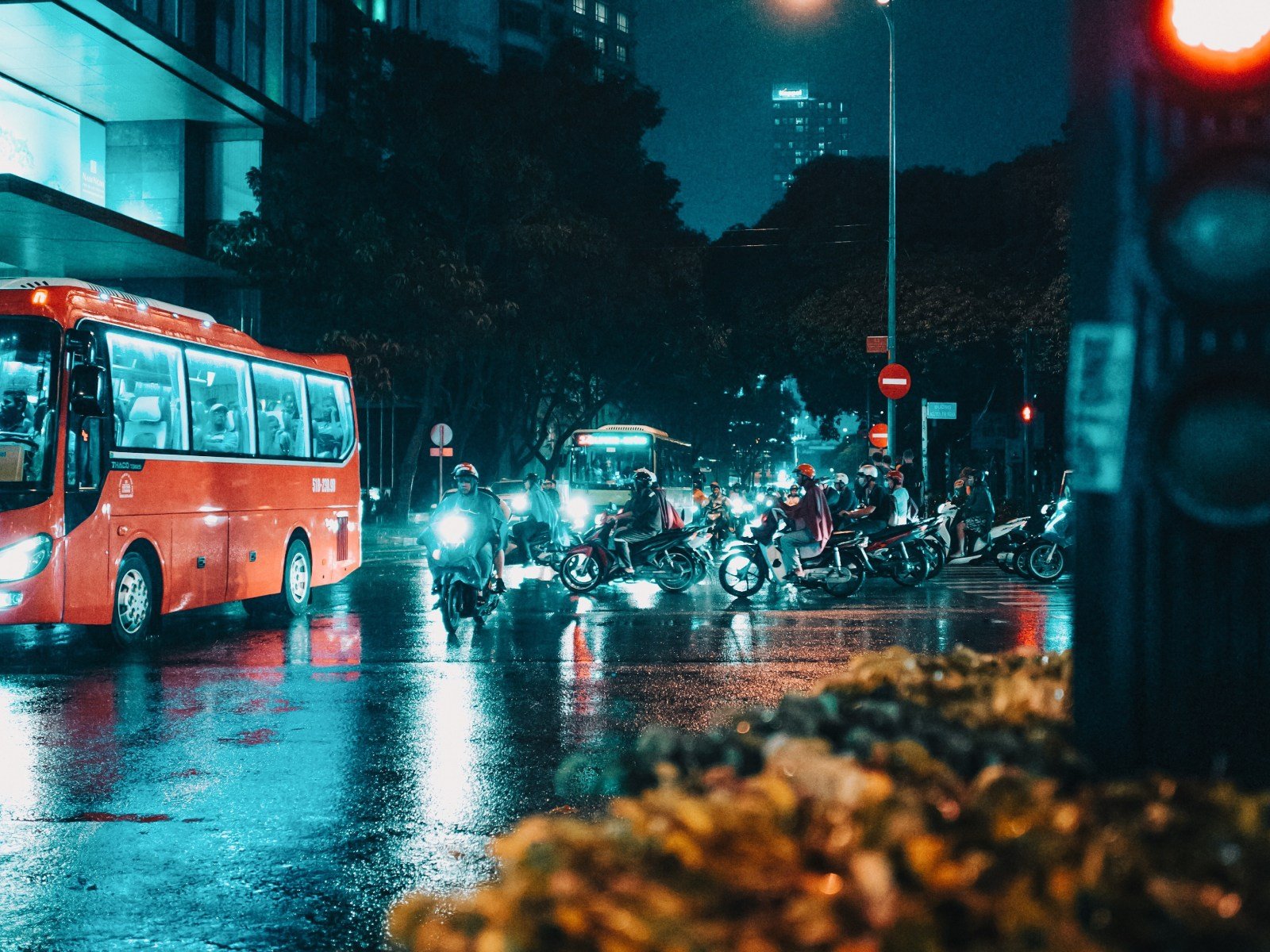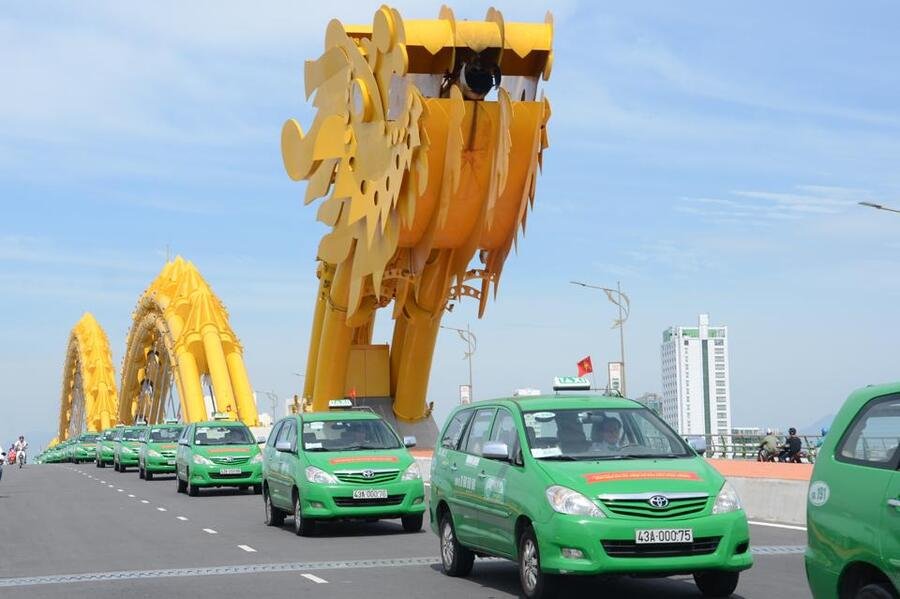As one of the most beautiful nations in Southeast Asia, with a population of almost 100 million people, Vietnam is a huge country that is best explored using all forms of transport in Vietnam available to you. This includes everything from flying to trains, buses, cars, and bicycles.
Flying is the best way to cover long distances, however, driving a motorbike is the most convenient and exciting way to get up close and personal with the stunning landscapes and bustling cities that Vietnam is world-famous for.
Table of Contents
Types of transportation in Vietnam
Planes – Vietnam has a good network of domestic flights, with several carriers providing regular and frequent services between cities and provinces.
Trains – A Vietnam railways network connects coastal cities with train routes from Ho Chi Minh City to Hanoi.
Buses – Public transport in Vietnam, including long distance bus travel, is a popular and affordable way to get around Vietnam, with buses connecting most major towns and cities. The sleeper buses are also amazingly comfortable, providing ample leg room even when fully reclined (although maybe not for anyone over 6 feet tall). Even fancier tourist buses are usually available as well, although tourist bus options are more expensive most of the time.
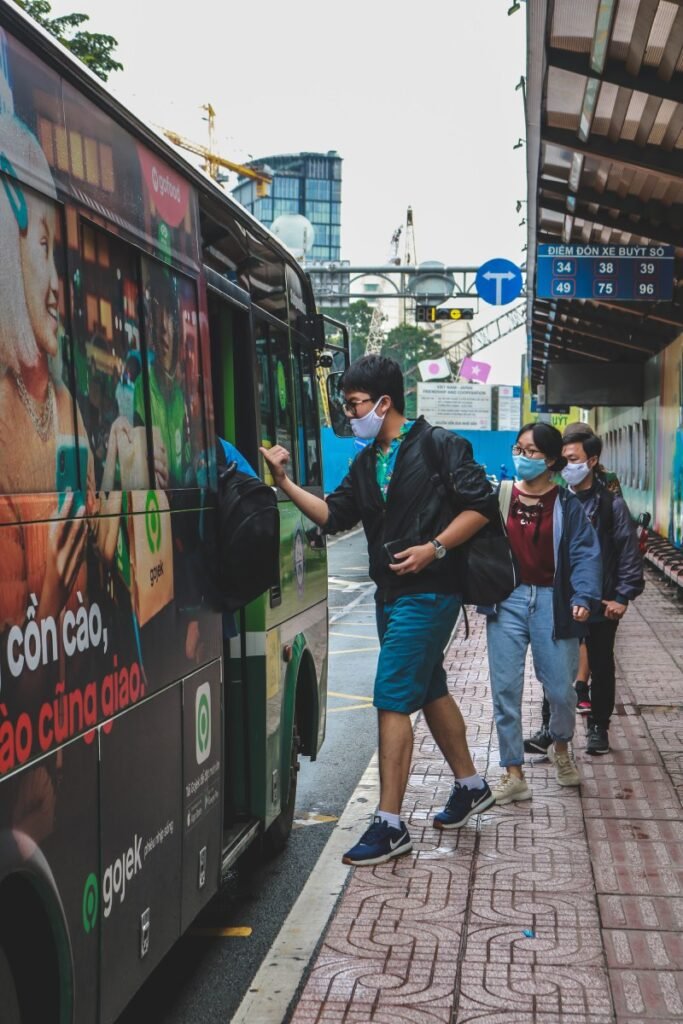
Motorbikes – Motorbike travel is a great way to explore Vietnam at your own pace and see more of the country than you would by using other forms of transport in Vietnam.
Cars – Car rental with a private driver is available in most of Vietnam’s big cities for both intracity and intercity travel.
Taxis – In most urban areas, you can get a metered taxi or a private hire taxi. In either type of taxi, you need to negotiate the fee. Ridesharing apps like Grab and Gojek are also options that make it easier to deal with price.
Boats – Travelling by boat is a fun way to discover villages along the Mekong Delta and hop between islands in destinations such as Phu Quoc and Halong Bay.
By foot – Walking is a great way to explore smaller villages and get to know the locals, while walking around cities can be exhilarating due to the intense sights, sounds, and smells.
National Airline Transportation In Vietnam – Best For Large Distances
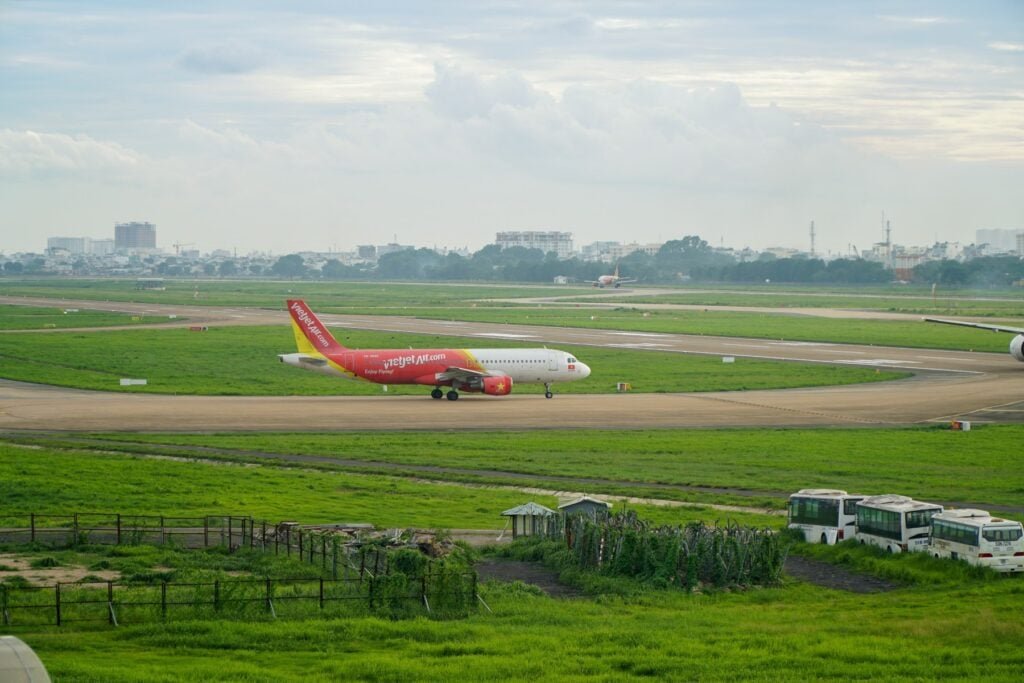
Air travel is used for some longer intercity travel as well as international flights to Vietnam from nearby countries such as China, Japan, and Cambodia.
It is very convenient to book a flight to just about anywhere in Vietnam with multiple daily flights to all the popular domestic destinations. Many expats and locals use air travel for weekend getaways.
Best Vietnamese plane ticket booking sites
Vietnam Airlines – As the only Government-owned airline, Vietnam Airlines flights are likely to be the most reliable but aren’t generally the cheapest option.
Viet Jet Air – Viet jet is Vietnam’s first low-cost airline and offers some of the cheapest flights both in Vietnam and to nearby countries.
Jetstar Pacific – Jetstar is a subsidiary of Qantas, one of Australia’s largest airlines, and operate within Vietnam too.
Bamboo Airlines – A private national airline that offers budget flights domestically.
Vietnamese plane ticket prices
Travelling domestically by plane is very cost-effective with most routes priced up to only $25 one-way.
Vietnamese plane rules, etiquette, & tips
Air travel rules are no different from elsewhere in the world. Be prepared for a lengthy wait to get through border security when entering Vietnam from international destinations, though. Sometimes immigration can take up to a few hours.
Traveling By Vietnamese Train – Comfortable Transportation With A View
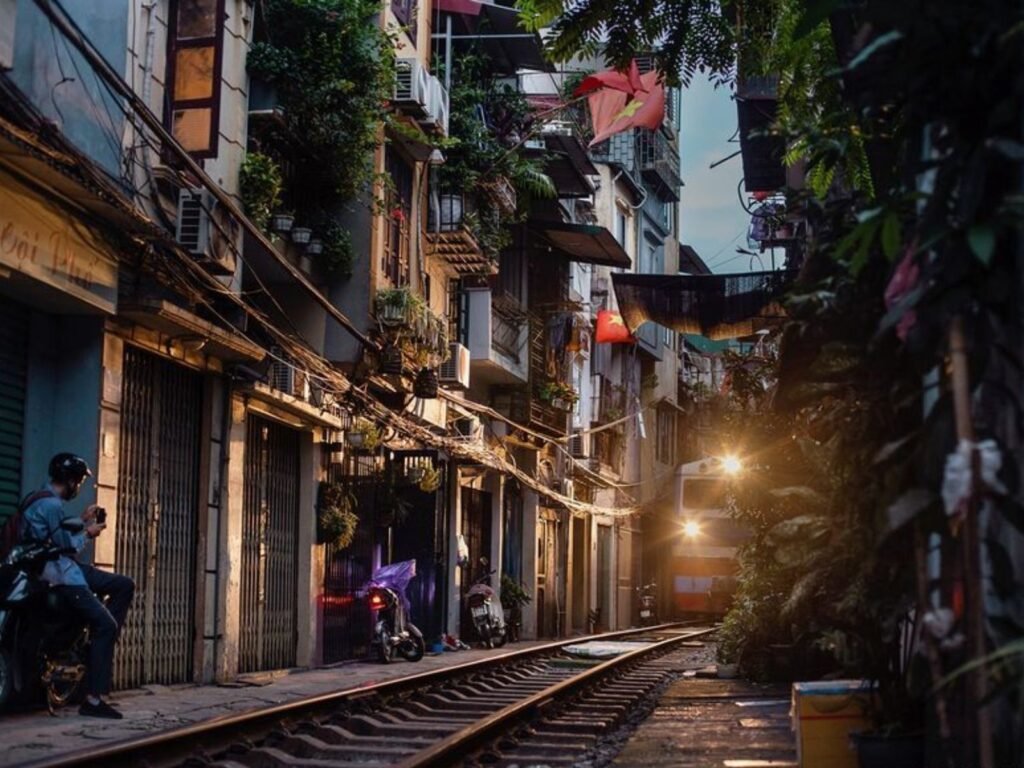
Train travel can be used between major points such as Hanoi, Ho Chi Minh City, and as well as smaller tourist cities such as Phan Thiet, Ninh Binh, and more.
Train travel is a cheap and viable option for covering large distances in Vietnam.
There is currently around 3,000km of railway track throughout the country with Reunification Express trains operating daily between Saigon train station in Ho Chi Minh City and Hanoi train station.
Vietnamese trains are generally reliable and comfortable. Seating is in a 2×2 formation with a table in the middle, though it is also possible to book a sleeper cabin with 4 or 6 bunk beds in one room. These sleeper trains are very comfortable and worth the experience, though it can be a bit noisy so it’s best to bring a pair of earplugs.
Best Vietnamese train ticket booking sites
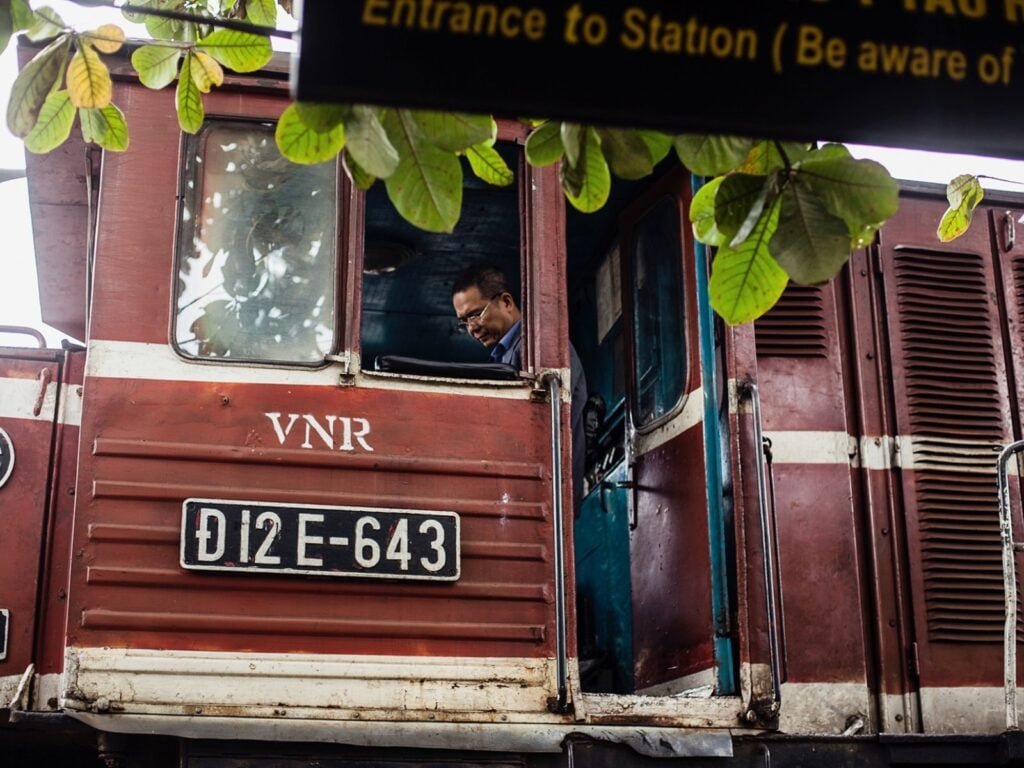
Bao Lau – an efficient website that details seat and sleeper-berth availability. Bao Lau also accepts international cards with a 40,000d ($2) commission per ticket. E-tickets are emailed to you.
DSVN – The official booking site for train tickets on domestic routes. Tickets can be bought via payment gateway, e-wallet, banking app, or reserved online and paid for with cash in a train station.
12go.Asia – As an international provider of all travel services, 12go offers price comparison and online ticketing for several train journey services in Vietnam.
Vietnamese train ticket prices
Train travel over large distances is more expensive than air travel, though the experience of a few days on a train is unforgettable.
A ticket for the Ho Chi Minh to Hanoi train costs up to $80 depending on the train type and provider.
An overnight train ticket for shorter journeys such as Hanoi to Sapa train costs around $15-$30.
Vietnamese train rules, etiquette, & tips
– Food and drinks are allowed on board and it’s customary to bring your own meals as they are not always readily available onboard.
– Smoking is not allowed on the train.
– It is best to reserve your train tickets in advance, as popular routes and times can often sell out.
– Keep an eye on your personal belongings especially when changing trains to avoid theft.
Vietnamese Bus And Coach Transportation – Good For City Hopping

Another popular way of getting around Vietnam is by bus. With a well-developed network of highways, national bus services, as well as a number of private bus services, traveling by air-conditioned bus is a relatively comfortable way to cover long distances relatively quickly.
However, it is important to note that the quality of buses and services can vary greatly depending on the company and route.
Taking a local bus to travel around large cities like Ho Chi Minh City is not recommended with the complicated bus schedule, finding the location of bus stations, and the lack of air-conditioning an off-putting factor. It is much easier to take a taxi to discover the city.
Open tour buses are available in major cities like Hanoi and Ho Chi Minh City. An open tour is an eye-opening experience for most travellers who want to enjoy chaotic traffic from a safe distance.
City bus routes are well-established in most Vietnamese cities. They can be a bit intimidating to navigate, especially for those with no Vietnamese language skill. With a little bravery and a phone with a connection to Google Maps, though, the city bus can be a great cultural immersion experience.
Best Vietnamese bus companies
Hoang Long Bus – This company operates a number of bus routes between Hanoi, Hue, and Danang.
Sinh Cafe Bus – Operates a number of routes between Ho Chi Minh City, Cambodia, and Laos.
Phuong Trang FUTA Bus – This company operates a number of routes between Ho Chi Minh City and destinations in the Mekong Delta, as well as other cities in South Vietnam.
Mai Linh Bus – This company is the most popular and reliable bus company in Vietnam.
Vietnamese bus ticket prices
Vietnamese bus travel is inexpensive but not recommended for super long distances.
Short routes such as the sleeper bus from Ho Chi Minh to Nha Trang (435 km) cost around $20, while the service from Hanoi to Sapa (315 km) is $15.
Vietnamese bus etiquette & tips
When traveling by bus in Vietnam, it is important to be aware of etiquette and customs.
– Be sure to take your shoes off when boarding overnight buses and keep your voice to a minimum.
– When onboard, keep your personal belongings with you at all times as thefts do occur on buses.
– It is also a good idea to have some small bills and coins on hand in case you need to pay bus drivers or buy something from the food vendor often present on the bus.
– If you need to get off the bus, let the driver know in advance and be sure to take all of your belongings with you.
– It is also important to note that drinking alcohol on buses, especially with bus drivers, is illegal in Vietnam.
Traveling By Motorbike In Vietnam – In A Nutshell

Motorbikes, known as ‘xe máy’ in Vietnamese, are found throughout the country. However, they are not safe to ride on highways and fast roads, and it is best to use them only for short distances around towns and cities. People often use motorcycles or bicycles for personal transportation, especially in rural areas.
Best Vietnamese motorcycle rental companies
RentABike – An established motorbike company that specialises in long-term rentals to expats living in Hanoi, Da Nang, and Ho Chi Minh City.
Tigit Motorbikes – With offices in HCM, Danang, Hanoi, and Dalat, Tigit offer a simple pick-up and drop-off service between cities.
Vietnam motorbike renting prices
Renting a motorbike in Vietnam typically costs around US$5 to US$20 per day, depending on the type of bike and length of rental.
More expensive motorbikes are available and prices are negotiable.
You can generally find motorbike rental shops on and around backpacker streets in the center of large cities or towns.
Vietnam motorbike tour packages
Tour companies such as vietnammotorbiketoursclub.com help you explore Vietnam at your own pace. Motorbike tour prices depend on the size of the group but can cost anywhere from $100 to $500 per person per day including food and accommodation.

Vietnamese motorcycle rules, etiquette & tips
– A Vietnamese or international driving permit is required to drive a motorbike in Vietnam, though rules are not always enforced.
– Ride on the right and overtake on the left – another rule that is occasionally broken.
– When riding, always be aware of the other riders around you. Motorbike drivers often use one-way roads the wrong way so be alert for creative styles of driving.
– Helmets are mandatory for both drivers and passengers.
– Car and motorbike drivers often use their horns simply to make other road users aware of their presence. This can be quite a culture shock from Western driving norms, but it’s for safety and nothing personal.
Vietnamese gas pumps – Not self-service
Special tip for first-time gas station users in Vietnam: you are not expected to gas up yourself or to give a tip for the service.
When gassing up in Vietnam, simply open your motorbike gas tank, tell the attendant how much gas you need (typically 50,000 VND – $2.50 for a full tank) and allow the attendant to get to work. If at a loss, simply tell the gas station attendant “nam muoi,” which means “fifty.”
Vietnamese Taxis: Cars Vs Motorbikes
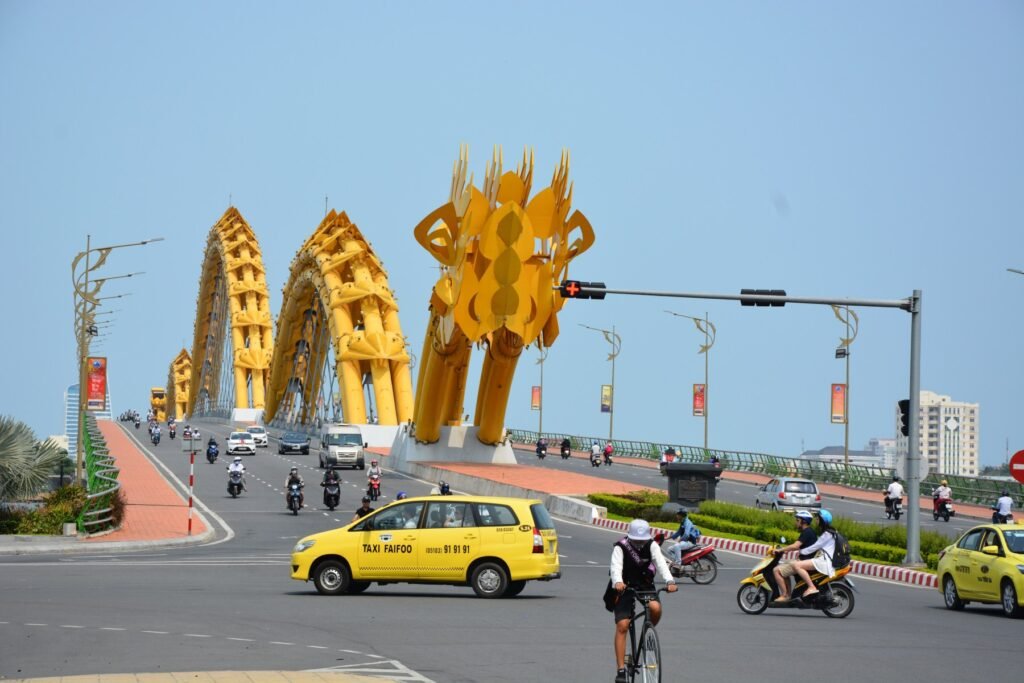
Taxis are also popular, and they can be found throughout the country. The cost of a taxi ride is usually based on the distance travelled. Taxis can also be used for some intercity travel, but they are more expensive than buses for long distances. In Vietnam, taxis can be broken down into two categories: car or motorbike.
Best Vietnamese taxi booking sites
Taxis, both car and motorbike varieties, are easy to book from apps. Here are some of the most popular services.
Grab – Grab is a taxi and private car booking service that uses modern technology to offer much better rates than regular taxis, as well as food delivery services.
Taxi Mai Linh – A well-known and popular taxi company in Vietnam.
Gojek – Gojek is an Indonesian based company that has recently expanded into Vietnam. It is a motorbike taxi service but also offers other services such as food delivery.
Vietnam Airport Taxis – Reliable taxi services operate at all of Vietnam’s airports. Simply go to any taxi desk upon arrival and pre-pay for your journey.
Vietnamese motorbike and car taxi prices
Prices for car and motorbike taxis vary depending on the type of taxi, the distance travelled, and the time of day. Generally, expect to pay around $0.50 per kilometer for a car and $0.25 for a motorbike.
Should I travel by car or motorbike taxi in Vietnam?
That depends on you and whoever is in your group. Going by car is more comfortable, private, and safe. Whereas. if you are an adventure traveller, you would probably love getting up close and personal with the Vietnamese street ambience on a motorbike taxi.
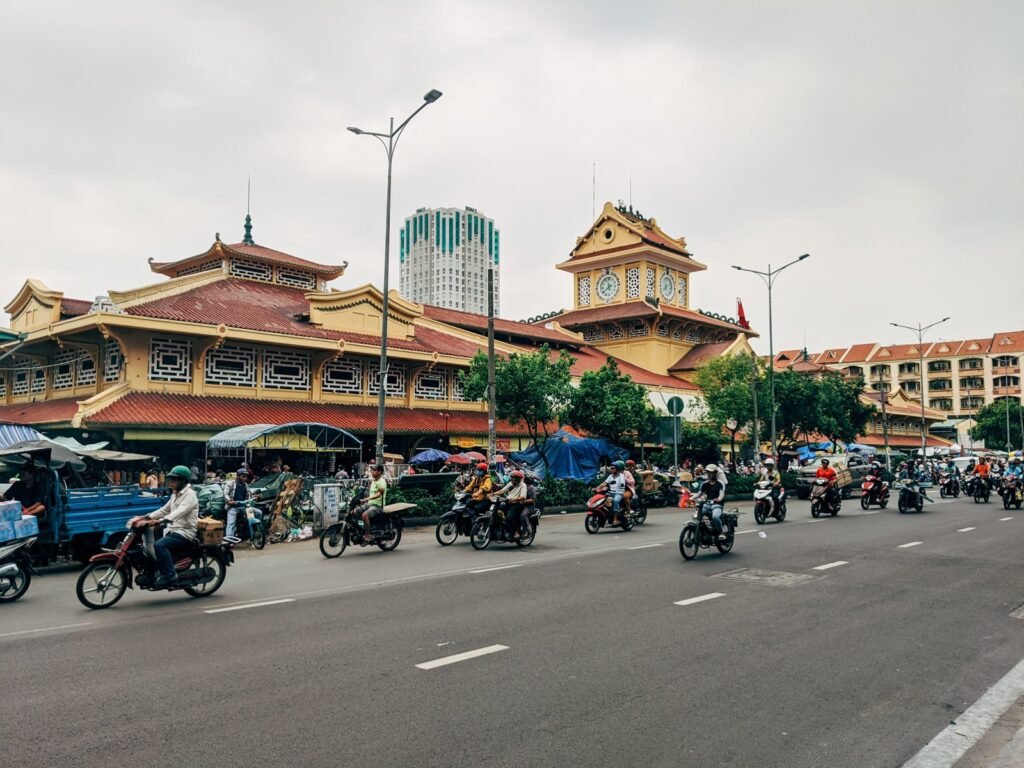
Vietnamese taxi rules, etiquette & tips
– Drivers may not always use the meter, so it’s important to agree on a price before starting your journey.
– Alternatively, use an app like Grab to book your taxi, as this offers you more protection with fixed prices.
– If you need to inform your driver of a change in plans, try to do so in Vietnamese. English is not widely spoken by taxi drivers.
Other ways to get around in Vietnam
In addition to these types of transportation in Vietnam, there are a few novelty ways of getting around that you can try.
Cyclos
Motorbike taxis are popular in Vietnam, but there are novelty versions of them available too. These include bicycle taxis, pousse-pousse (bicycles pulled along by locals), and cyclo (a bike with a sidecar that is push-pedaled).
Hail one down on the street and negotiate a price (around $2 for a short tour). This is especially fun and interesting in the cultural town of Hoi An.
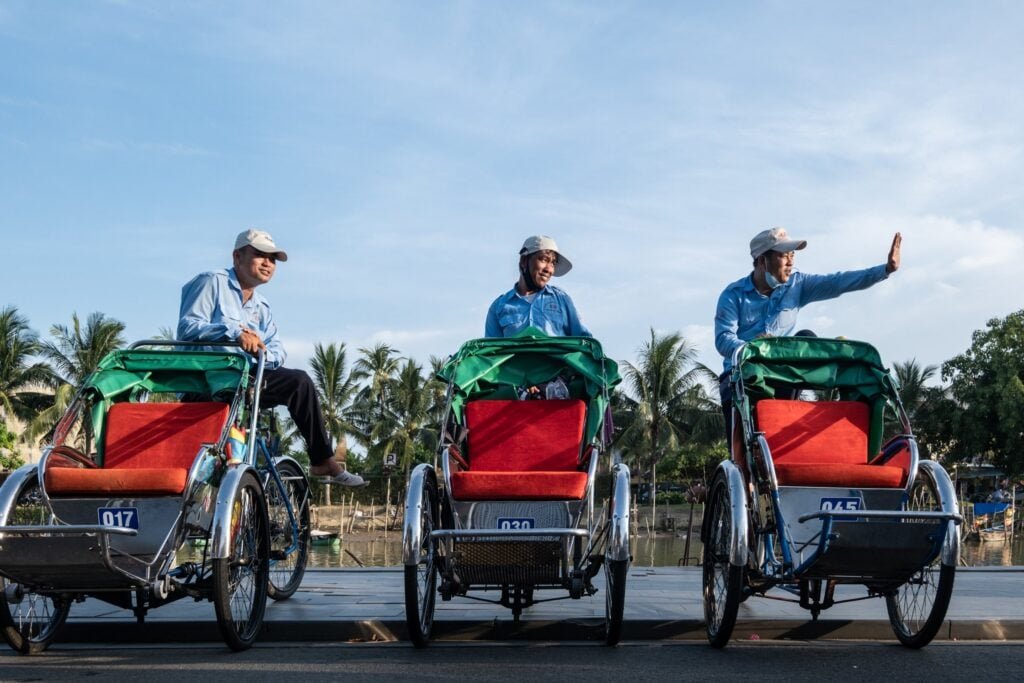
Boats
Boat travel is also an option, and it can be used for traveling along the Mekong River and other smaller rivers. You can also hire boats for the day from travel agencies and locals along the coast for private tours or fishing excursions.
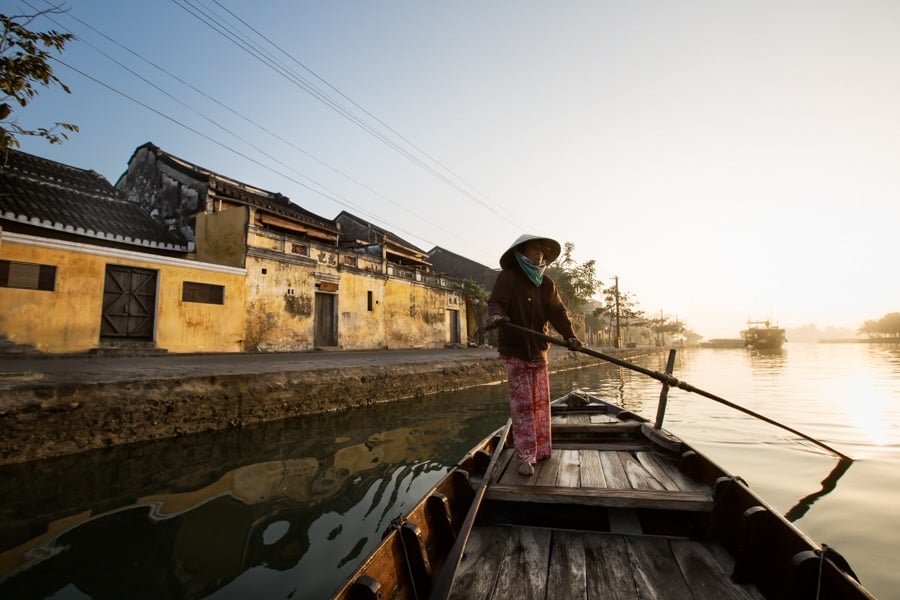
FAQs about Vietnam Transportation
The main forms of transportation in Vietnam are motorbikes, buses, and taxis. Motorbikes are widely used by locals for their flexibility and ease in navigating busy city streets.
Tourists in Vietnam commonly use taxis, buses, and motorbike taxis for short distances, and planes or trains for longer travels between cities. Many tourists also opt for guided tours which provide transportation.
Public transport in Vietnam, including buses and trains, is affordable and connects major cities and tourist destinations. However, it may not always be the most time-efficient option compared to other modes of transport.
Buses are generally the cheapest mode of transport in Vietnam, offering an economical way to travel between cities and within urban areas.
The future of travel in Vietnam
As a developing nation with a rapidly growing tourism industry, Vietnam is currently enjoying a massive boom in infrastructure improvement projects. The result is that it will be easier than ever before to travel around on land, sea, and air – both independently or through tour operators.
If you are keen to start your Vietnamese adventure, be sure to consult our guide to the best places in Vietnam before you go!

